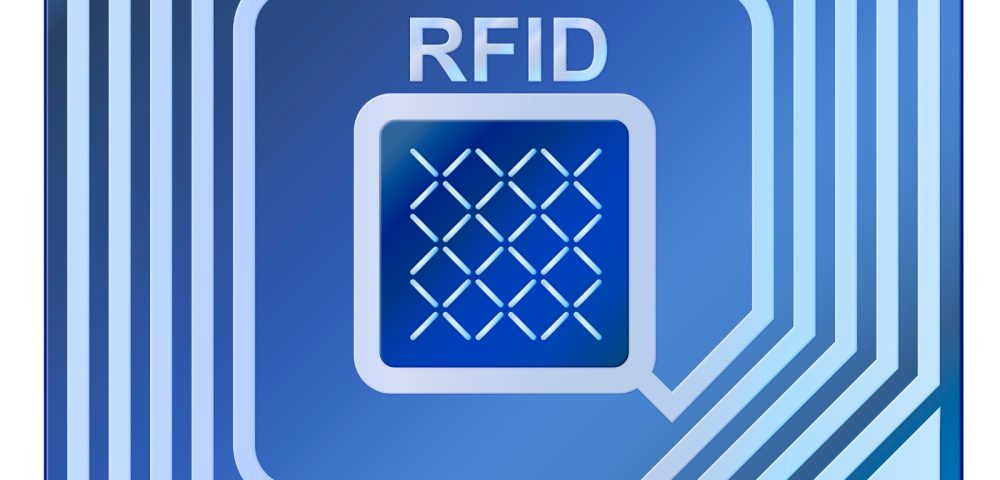Manufacturers everywhere keep asking the same thing on technology forums and even on Google: ‘Why does RFID cost so much?’ It is a fair question. With automation spreading fast, RFID feels like a must-have, yet many factories adopt it and still struggle with tracking gaps, wasted scans, and underwhelming results. What exactly are the reasons behind RFID’s rising costs?
This article will answer your question.
What is RFID, and How Does It Work?

- RFID, or Radio Frequency Identification, is a process where tags are attached to objects, and people read and capture the essential data through radio waves.
- There are two main types of these tags, which are passive and active.
- The key difference between these two is that passive tags lack their power source, relying instead on the energy from RFID readers to transmit information to the final point. On the other hand, active tags come with a battery to transmit signals even from a long distance.
- The RFID systems come to the market as a single, integrated network of affiliated sub-elements. This varies from tags, readers, antennas, to backend software.
- The mechanism works as follows: the tag collects data, then sends it to the reader via the antenna. Finally, the backend software processes the collected data pool.
- Many people confuse this with the process of barcodes, which require direct sight to hold data. RFID can scan through even boxes and transmit data wherever the endpoint is.
Breaking Down the Cost

RFID Tags: Material, Type (Passive/Active), Volume Pricing
RFID tags cost more than people expect due to the high cost of materials and the complexity of design. Passive tags stay cheaper, but active ones include batteries and stronger parts, so prices climb fast. If you need durable tags for harsh places, that adds cost, too.
Buying just a few tags also costs more per unit compared to buying thousands. When choosing tags, businesses should consider the tag type, its placement, and the quantity they need.
RFID Readers: Hardware Quality, Range, Frequency
RFID readers do not just scan; they must handle different tag types, read from far distances, and deal with radio frequency limits. Stronger readers with long-range abilities and fast scanning cost more.
Nothing is challenging for those who work indoors. When the RFID readers have to survive heat, moisture, or dust, the prices eventually skyrocket.
Also, higher-end models work with much higher frequencies, which allows flexibility in applications. So, readers take a significant portion of the budget when the job calls for accuracy and reach.
Software and Integration: Backend Systems, Analytics, Middleware
RFID requires specialised software for processing the data. Backend systems must gather, organise, and evaluate data in real time in this situation; therefore, developers must create, modify, and integrate them with your current systems.
Middleware helps everything communicate smoothly.
If the company purchasing the latter expects customised dashboards, filtered reports, or instant alerts, the cost doubles. This means the numbers increase with every additional feature you expect from the RFID supplier.
Installation and Maintenance: Setup Complexity, Environmental Conditions
Do not consider the RFID setup as a simple task. Like any other integrated system in the industrial world, this also requires a special setup. It is not just plugging in machines, and the installers must check various aspects before doing so. They must inspect signal strength first to position antennas at the proper angle. The most challenging aspect is ensuring that readers do not overlap with one another.
Setup becomes quite tricky when the RFID is installed in places like factories, warehouses, or outside yards. In such spots, installers need to adjust to weather, metal surfaces, or dust. The result is that the setup becomes more difficult and costs keep growing. Once installed, the regular upkeep of the RFIDs comes. They need routine cleanups, repairs and quality checks, which cost more money.
Licensing and Compliance: Government and Frequency Regulations
For the frequencies, different countries have imposed different regulations and standards. This is where licensing is quite challenging, as RFID uses radio waves. Various aspects significantly contribute to the weight of your final billing receipt. Some examples include the frequencies you can use and the power of your devices. If they need to incorporate RFID within the operational plants, the companies must pay for the license and obtain the certificate.
When the company operates across multiple regions, it must obtain certificates and licenses from each one. Moreover, tracking items across borders significantly increases expenses.
Hidden Costs That You Do Not See

Customisation Needs
Every business has its unique operational patterns. Therefore, the RFID tags that come right off the shelves will not match every business. Your teams may need to tweak software, change tag formats, or adjust the system to match workflows. Customising everything from how the system tracks items to how it sends alerts can quickly raise costs.
Staff Training and Process Changes
Even if you purchase the best RFID system, you will not get the expected results if you do not train your staff to reap the harvest of your investment. This is where your employees need proper training on working with these new additions. They need to know how to scan the tags, adjust the readers, and conduct simple comparisons, among other tasks. It will take time and will require some process changes.
Necessary Infrastructure Upgrades
We already mentioned that your RFID systems rely entirely on strong networks and powerful back-end panels. The issue starts when your Wi-Fi becomes weaker or outdated over time. That way, you cannot expect to have a smooth RFID integration. Either you have to establish a wireless coverage or install new routers to fix this problem. Alternatively, you must upgrade your ERP system to ensure systematic connectivity.
How to Reduce the Cost of RFID Implementation

Start Small: Phased Adoption
Instead of jumping into a full RFID rollout, we can see that innovative companies take small steps. You can test the system in one department, track results, and fix problems early without wasting resources. Starting small also helps your team learn the process without pressure. Once the first phase works well, you can expand slowly.
Choose the Right Tag Type and Reader Spec
Not all RFID tags and readers require a significant investment. You should match tag types and reader specs to what you need. Choosing smart helps you avoid paying for features you will not use. You must think practically and pick devices that fit your job, not just the fanciest ones.
Selecting the Right Vendor
If your goal is to avoid costly mistakes, then you must make better decisions when it comes to selecting your vendor. When you collaborate with industry experts, they will guide your company to choose the best setup that works best. They will extend their assistance in further training, maintenance, or upgrades whenever necessary.
Open-Source or SaaS-Based Software Options
Running an RFID system does not require the use of costly specialised software. Software-as-a-Service (SaaS) tools and open-source platforms are the most excellent options since they offer strong capabilities at affordable prices. These options also update automatically and include support without added cost since you can pay monthly or annually, with no need to spend money on a massive upfront fee.
Cerexio WMS with Embedded RFID without Extra Costs

You do not need to bolt on extra tools or worry about rising tech costs. Cerexio’s Industry 4.0-powered WMS (Warehouse Management System) includes cloud access and RFID tracking in one complete system. It scans, records, and updates item movements instantly, right from the shelf to dispatch. Since it is all-in-one, you can easily avoid the headaches of managing separate systems or paying for outside add-ons.
Ensuring RFID Works Best for Your Manufacturing Facility via New Tools

Unlocking RFID’s full potential is not about spending more. It is actually about choosing more innovative tools. Your manufacturing floor can transform overnight with the right upgrades, turning confusion into clarity and cost into savings. Don’t settle for average RFID performance. Take control.
FAQ about RFID
RFID readers sometimes face difficulty when too many tags activate at the same time. This results in data collision, which causes confusion in signal detection and reduces the accuracy of information gathering in busy industrial or retail setups.
This entirely depends on the type you wish to purchase. A barcode label is less expensive, costing only a few cents. On the other hand, an RFID tag costs between $1 to over $30.
The kind of RFID tags you employ will determine this. Under normal circumstances, passive RFID tags often live forever because they do not require batteries. Conversely, active RFID tags require batteries and typically have a lifespan of five to ten years. However, battery utilisation is the primary determinant of this.
